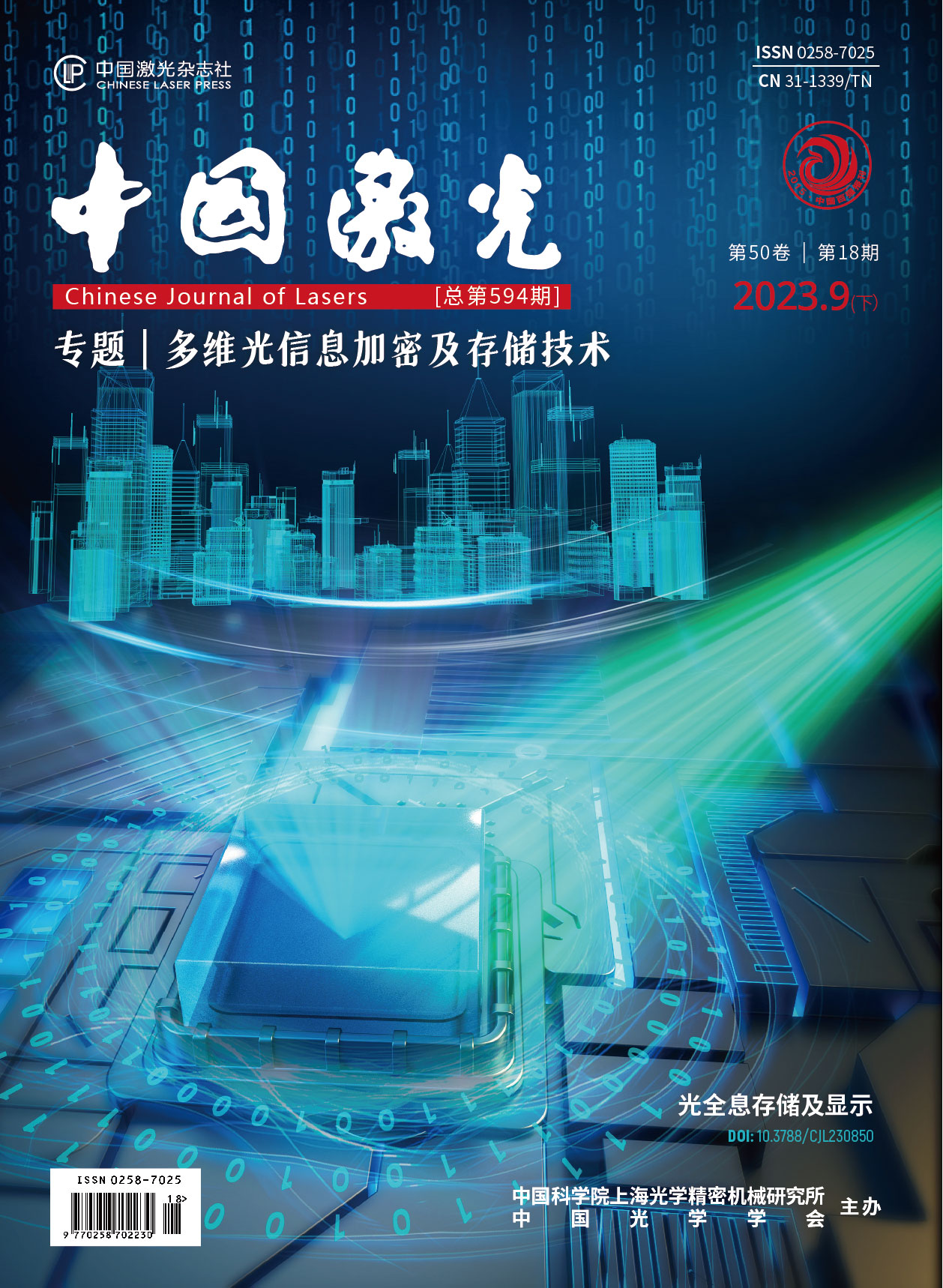飞秒激光与透明硬质材料的相互作用:从相变机理到永久光存储  下载: 628次特邀综述
下载: 628次特邀综述
Since the beginning of the 21st century, with the rise of the internet, artificial intelligence, cloud computing, and cloud storage, the amount of data generated has grown exponentially, thus leading to a sharp increase in the demand for data storage. According to the International Data Corporation (IDC), by 2025, the world is expected to produce a total of 175 ZB (1 ZB=1012 GB) of data, of which approximately 10%‒15% is expected to eventually evolve into cold data, which does not require frequent access but needs to be stored for a long time. Such data include the National Archives Center data, human civilization events, and scientific achievements.
Cold data can be stored in several ways, including in mechanical hard drives, solid-state drives, and tape storage. Among these, magnetic storage has problems, such as vulnerability to damage and high environmental requirements. In comparison, optical storage technology is durable, lighter, more energy-efficient, and has lower environmental requirements. Optical disk storage uses lasers to modify and engrave 0 and 1 on the surface of photosensitive materials to achieve storage. However, further reducing the point size of optical storage is challenging owing to the diffraction limit; consequently, increasing the capacity of optical disks is challenging.
A possible solution for increasing the storage capacity and reducing the refresh rate involves shifting from 2D storage to 3D storage, and from organic storage to inorganic optical storage. Femtosecond laser optical storage, which uses ultrafast lasers with extremely high peak powers to store data inside hard materials such as glass, sapphire, and diamond, has become a potential solution. Since 2003, several research institutions, including Kyoto University in Japan; the University of Southampton in the UK; and Tsinghua University, Huazhong University of Science and Technology, and Jilin University in China have introduced five-dimensional optical storage technology. Hitachi and Microsoft Research in Cambridge have also introduced unique ultrafast laser optical storage solutions.
However, femtosecond laser-based optical storage cannot meet industrial demands in terms of writing speed and storage capacity because of the complexity of the ultrafast action mechanism. Different powers, pulse numbers, and pulse widths produce different types of phase changes, thus affecting the optical properties of storage units and resulting in complex refractive index changes in the spatial distributions and birefringence properties. This correspondingly requires dozens or even hundreds of pulses, with pulse energies of tens to hundreds of nanojoules. Additionally, it prohibits both further reduction in the point spacing and interlayer spacing for high-density storage, and efficient processing through beam splitting with limited ultrafast laser energy, thus increasing the difficulty of industrialization. A study on the formation mechanism can offer ideas for accelerating the introduction of nanograting. Therefore, the formation mechanisms of the laser-induced modifications must be summarized.
Herein, we reviewed nearly 20 years of ultrafast mechanisms of interaction between lasers and transparent hard materials. First, we analyzed the physical process of the interaction between the femtosecond laser and transparent hard materials on a timescale. To specify the interaction between the femtosecond laser and transparent materials, the modification process and influencing factors induced by the femtosecond laser were investigated in detail. Based on the different types of structures induced by the femtosecond laser, the structures were divided into positive refractive index changes (Type Ⅰ), negative refractive index changes (Type Ⅱ), and scattering-based modification types (Types Ⅲ and Ⅳ). The formation mechanism and applications of each modified structure were discussed, and the application of nanogratings to 5D optical storage, including the principles, progress, and prospects, was explained in detail.
However, some problems remain in optical data storage based on nanogratings, such as low storage capacity and slow data-writing speed, must be overcome. To compensate for the deficiencies of this technology, new types of structures, namely Types X and S, were proposed herein. Type X nanopores are randomly distributed and generated by laser pulse width modulation, and are transient states between Types I and Ⅱ. These structures have very high transmittance, which is key for improving the storage capacity. Type S is an anisotropic nanolamella-like structure produced by fast pulse energy modulation, which can minimize unnecessary thermal effects caused by femtosecond pulses. These structures can improve the data writing speed.
Finally, we presented the challenges of 5D eternal optical storage as well as feasible solutions. Combined with the theory of far-field-induced near-field breakdown, the development of new materials is a promising research direction.
Eternal optical storage is a feasible solution for the demands of the big data era. However, the capacity and the writing speed both limit the practical use of this technology. Many researchers are attempting to overcome these problems and have made progress. We believe that external optical storage will be practical in the future.
刘姿廷, 袁一鸣, 李子越, 龚伟, 张栩, 赵新景, 王熠, 李臻赜, 王磊. 飞秒激光与透明硬质材料的相互作用:从相变机理到永久光存储[J]. 中国激光, 2023, 50(18): 1813005. Ziting Liu, Yiming Yuan, Ziyue Li, Wei Gong, Xu Zhang, Xinjing Zhao, Yi Wang, Zhenze Li, Lei Wang. Interaction Between Ultrafast Laser and Transparent Hard Materials: from Phase Change Mechanism to Eternal Optical Data Storage[J]. Chinese Journal of Lasers, 2023, 50(18): 1813005.







